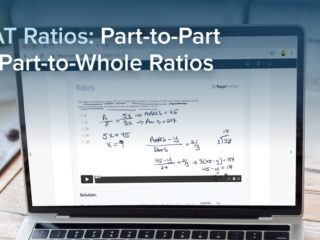Last Updated on May 9, 2023
GMAT OFFICIAL GUIDE DS
Solution:
We are given that a box contains red, white, and blue chips. We need to determine the probability that, if one chip is randomly selected, the chip will be either white or blue. Because the blue chips and white chips are mutually exclusive, we can use the addition rule for mutually exclusive events: P(A or B) = P(A) + P(B):
P(white chip or blue chip) = P(white chip) + P(blue chip)
Therefore, if we know the probability of selecting a white chip and the probability of selecting a blue chip independently, we can determine the probability of selecting a white or blue chip. Furthermore, since the sum of all probabilities in a sample space must sum to one, we can create the following equation:
P(red chip) + P(blue chip) + P(white chip) = 1
P(blue chip) + P(white chip) = 1 – P(red chip)
We see that if we can determine the probability of selecting a red chip, we can determine the probability of selecting either a white chip or a blue chip.
Statement One Alone:
The probability that the chip will be blue is 1/5.
We know the probability of selecting a blue chip is 1/5; however, since we still don’t know the probability of selecting a white chip, the information from statement one is not enough information to determine a value for P(white chip) + P(blue chip). Statement one alone is not sufficient. We can eliminate answer choices A and D.
Statement Two Alone:
The probability that the chip will be red is 1/3.
Because we know that P(blue chip) + P(white chip) = 1 – P(red chip), we can determine the probability of selecting either a white chip or a blue chip.
P(blue chip) + P(white chip) = 1 – 1/3 = 2/3
Answer: B



